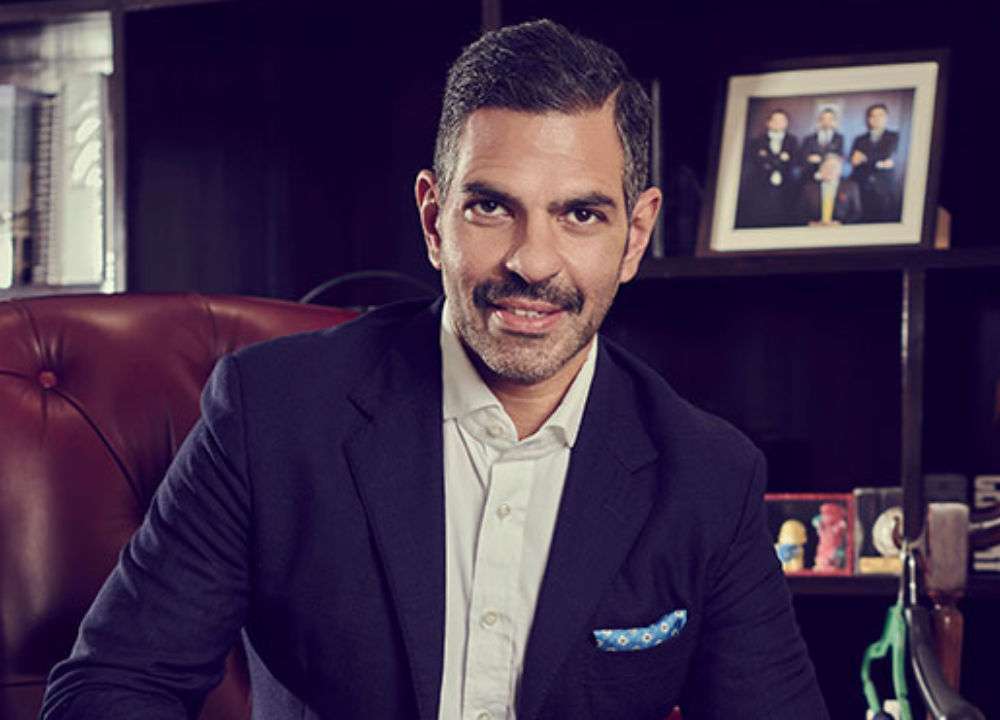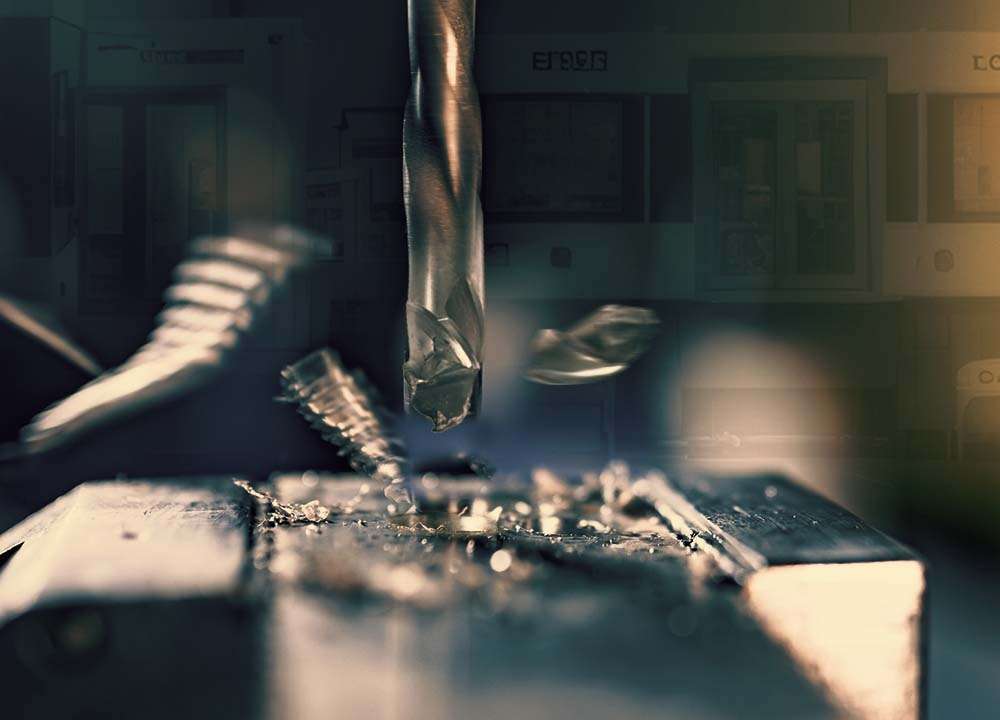Philip Mani joined Schmalz India in 1999 as one of its first employees looking after the sales based out of Hyderabad. He played a critical role in its growth, also moved up on ranks and now heading the company as its Managing Director. The soft-spoken and inspiring Philip had an incredible beginning as an entrepreneur in the manufacturing sector, which we found out recently, and now the story is all yours!
Schmalz India and Philip Mani are one of the valued customers of Machine Maker and our group for more than a decade. It was before 5 years they expanded their Indian manufacturing operations, and now they are all set to establish their second manufacturing unit in August 2022. Moreover, Schmalz added more machines and increased its manufacturing capacity to cater to the growing demand of the market. Supporting the Indian manufacturers with automation, Philip and Schmalz did a wonderful job during the pandemic period. To know more about these developments, I had a face to face meeting with Philip Mani, which was also after a couple of years.
 As you may have visited Schmalz India’s facility in Pune, the factory and office are built as per German specifications. In the grand office of Philip Mani, the interior decoration seemed exactly what you would expect from the best out there globally. But this time, my wandering eyes caught the attention of a little pink box which was kept on top of a model train at a special place in a spacious office.
As you may have visited Schmalz India’s facility in Pune, the factory and office are built as per German specifications. In the grand office of Philip Mani, the interior decoration seemed exactly what you would expect from the best out there globally. But this time, my wandering eyes caught the attention of a little pink box which was kept on top of a model train at a special place in a spacious office.
In the midst of all the extravagant furniture and polished tiles, this small box definitely seemed incongruous. On close observation, it was an old chipped paper box of staples highlighting Raj Staple'. I wondered if it was always there as we couldn't recall it from our previous visits. Maybe that was exactly its purpose; not to be noticed or celebrated but to exist and keep something alive. A memory, a souvenir, a reminder, or the story of what assembled Philip Mani.
Manufacturing in Blood: The Legacy of SPMs by A P Mani

Philip Mani is the son of A P Mani, a typical Tamilian who used to run a small-scale manufacturing unit named Raja Industries in Hyderabad. The firm used to develop import substitute products locally for companies like Coca-Cola and also make machines that make clips, D Clips, staple pins etc. Growing up around machines, their fumes and fulcrums; young Philip was naturally geared up with a love for manufacturing.
Even at a very young age, he used to sneak around his father's workspace and sometimes was allowed to help his father with finding a screw or reaching for a spanner. By the time of college itself, Philip had evolved into a skilled worker and was now working alongside his father.
But Philip felt like he could do more, something on his own, he dreamed of high skies beyond his father's shade. With determination and skills as his capital, this young man set out to make a change.
A venture of Dream: The Beginning of Raj Staples

The base plan for his own company was already in motion during his Commerce graduation years. After graduation in 1996, Philip took out a loan and started his venture, manufacturing finished goods from the SPMs built by his father. It was a small company that produced primarily staple pins, and also paper clips, and jump clips ‘D’ clips which are used in ladies' bags. He named his humble venture Raj Staples, which was his way of giving an Ode to his legacy.
The major product he manufactured was Staple Pins, and it was a very competitive field at that time. Yet Philip eventually found the majority of his market in the small town of Madurai, and there he found one dealer who bought almost everything he produced.
Philip picked up the Madurai market for Raj Staples catering to the pickle manufacturers and their vendors who were thousands of housewives. The company used to source pickles in large quantities and ration them among housewives to pack them into small plastic covers. Before they came across Raj Staples, they used other staple pins which were hard on the thumps of these housewives. Their earning was a mere one paisa per packet they stapled. In order to make at least 30-40 rupees a day, they had to press on these staplers three to four thousand times a day. This caused them so much pain and time for such a small income.
Stapling Pickles at 1 Paise: Touching Lives with Innovation

Understanding their pain, Philip made a minute but a very smart innovation in the staple pins he was manufacturing. He used a much lighter wire which was 0.22 mm less than other companies, enabling Raj Staples pins to be much gentler on fingers. This might not be a tangible issue for occasional users of staplers. But for these housewives, who had to constantly keep pressing on these staplers it made big difference.
Once they started using pins by Raj Staples, they demanded the same staple pin as it was somehow making their job easier and less tiring. The lesser effort they had to put on stapling each packet, the lesser strain they had. They were happy.
Unlike other staple pins available in the market at the time, Raj Staples pins became superior in many ways. Philip always made sure that his staple pins were straight. Any deformed pins, even in even minute degrees in the machine, might ruin a whole batch by making pins that get jammed during stapling. This pickle manufacturer used to buy such crooked staple pins and while packing a considerable number of packets were getting torn and ripped by jammed pins. Once he switched to Philip's Raj Staples there were no damaged products to be found. Thus the manufacturer was also happy.
This was the game-changer and a company secret at the time. Philip used a very thin extra layer of rubber-based adhesive on the bottom layer of his staple pin in addition to the adhesive at the top. What this means is his pins were always intact as a set. They even used to demonstrate by throwing these boxes into the walls to prove the point. This was possible because of the rubber adhesive. This glue took longer to dry up. So, by the time the product reaches its consumer from the company which took almost 6 months the glue won't be worn off. This genius innovation kept his staples and their demand intact.
Exceeding Demands; Expanding Capacity
Philip was a man of principle who was never ready to compromise on the quality of his products. In most of the cases even when some of the companies would advertise the staple pin set containing 50 pins but in reality, only 48 or 49 would be packed in those sets. The difference in two or three pins when looking at the big picture could make the company a decent profit. Consumers might not even notice the missing pins. But Raj Staples and Philip were adamant about what he was supposed to offer, if they promised 1000 pins in a box, it would be accurate. 
Such high standards had captured the trust of customers. Even when the price of staple pins increased, customers came back. Eventually, after a very successful year, Philip received a cover from his dealer containing almost 50 letters from different sellers across Tamil Nadu wanting to retail Raj Staples. The dealer couldn't meet their needs as young Philip wasn't producing enough for them all. When he got all these letters, it boosted his energy. His rigorous discipline finally paid off. Philip decided to expand his production. He took out another loan and bought 8 more machines resulting in a total of 16 machines.
Lesson Learned Hard Way: Right Partner for Steady Growth

Everything was going way better than this young entrepreneur expected. But not for very long. One day he started hearing complaints about his staple pins breaking off, which was very unnatural for Raj Staples. Philip was devastated. But the real question was how? What was causing this? He checked everything twice and thrice at his end and couldn't find a single error. After a lot of examination and searching, they found the real culprit. It was the greedy hands of the supplier in Chennai who used to make Philip’s special rubber-based adhesive, who thought of making some quick bucks.
As Philip's orders multiplied, he ordered a bulk quantity of adhesive. Instead of importing the raw materials, the supplier used before, he bought local products to build more margin for him. At the time of manufacturing staple pins, they looked and felt exactly fine. But by the time it reached the customer in about 6 months, glue started to deteriorate and staple ins were breaking loose.
This was a big blow to Philip because he had already produced another 6 months' worth of batches using the same glue. All that piled up product was of no good. This was more than something a young entrepreneur in his early twenties could bear; both financially and strategically. Even though he tried to pick up and keep running again it wasn't as effective. He had already lost a lot of customers and goodwill for the product. With a heavy heart, Philip decided to shut his dream venture down but his father had his back and said he'll take over while Philip figures out something else.
The Second Innings: Dubai or India?

Such an unfortunate ending to his company had left Philip shaken. He listened to some of his friend's advice and decided to set out for Dubai looking for job opportunities. He was on a visiting Visa and within just 3 months, he almost tried out 6 different jobs. But nothing was clicking with him, nothing made his soul happy. He never felt a sense of belonging there. At last, he stumbled upon a satellite system company in the sales department. After working there for almost two months, he came back to India for a Visa change.
During his time in India preparing to leave for Dubai with a job visa, Philip met Commander Anand Vithal Badve, a manufacturer based out of Hyderabad. They knew each other from his college days and CDR Badve has been observing Philip's entrepreneurship and its success closely. CDR Badve informed Philip about his plan to start a joint venture with Germany based Schmalz, offering their automation solutions and products in India.
CDR Badve put forward an offer for Philip to work with him. Philip never felt like he fitted in any job he tried out in Dubai, maybe this was his thing after all. When CDR Badve brought Philip to his office to show vacuum lifters and tube lifting systems, it lifted Philip’s spirits as well. He decided to risk everything and take the chance by joining Schmalz as its Sales Executive in 1999. Even now Philip is extremely grateful to CDR Badve and looks up to him. Philip says that CDR Badve's mentoring and sense of discipline has helped him a lot in his personal and career growth.
Journey with Schmalz in India
Schmalz was one of the first companies in India to come up with vacuum tube lifting technology. Introducing such a new and innovative product to the market was thrilling and frightening at the same time. Lack of awareness about the product made it hard; people didn't know that vacuum was capable of handling up to two tones. Even after explaining in detail, clients remained sceptical. It took them almost a year to lock in their first order from LG Electronics.

By the second year, Schmalz got an entry into the CD – DVD industry for their vacuum cups with Moserbaer being their top client. The business was booming. And Schmalz decided to manufacture products in-house in India to cut down on production costs. Due to the availability of resources and transportation facilities, they moved to Pune in 2002 and started building their manufacturing facility. From Sales, now Philip was given the additional responsibility of looking after the new facility and its operations.
With the business growing, Germany started taking more interest in the Indian business took over Schmalz as a 100% subsidiary in 2007, and appointed a new Managing Director Volker Schuckert from the Head Office. This change positively affected Philips’ career as it enabled him more freedom and support in taking up risky projects. He was later promoted to President of Operations in January 2009.
Germany For India

The German Managing Director of Schmalz in India, Volker Schuckert observed how hardworking Philip Mani was and he saw potential in him. Mr Schuckert was more than sure that Philip would make an excellent replacement for him. He insisted Philip take on MBA from IIM Calcutta and enrolled him in a one a year programme in Leadership and Management. Philip says that the class was worth it. In 2011, Mr Schuckert handed over his baton as Managing Director in the safe and well-qualified hands of Philip Mani.
He always remembers Mr Schuckert as a mentor who guided Philip Mani during his tenure in India. He always told Philip not to take fast decisions, and give a day's time which helped him to analyse different situations. He still remembers the time he spent with Mr Schuckert and is thankful for the contributions brought to his career.
The lessons learned even at a young age, and the exposure to working with Schmalz helped Philip bring innovative changes to Schmalz India. He changed the whole organizational structure with the supporting team and brought in managers for different industry verticals which naturally caused a steady growth in sales. Philip also brought in South, North and West regional managers. By the end of 2016, they had expanded the facility by another 4700 square meters, and a grand inauguration was done which was attended by people from Germany and India.
Then the pandemic happened!
Serving India with Automation: Overcoming Pandemic Hurdles
As Schmalz was a supplier of products in essential good manufacturing like pharmaceuticals, and the food industry the lockdown never impacted more than a week. Considering the requirement of automation for the medical and food industry at that time, Philip and his team started working an extra mile and managed to get the necessary approval for initiating the manufacturing operations.

But the real question was how? Under the guidance of Philip Mani and with the support of all the workers they quickly adapted. For the first five days, everything felt so blank, there weren't any guidelines or protocols to follow yet. So Schmalz set up beds and food for a limited number of employees inside the company and also set up tables in the houses of other employees to complete all the handwork required. Adapting to this new strategy Schmalz managed to keep up with its turnovers and targets due adaption of automation. Schmalz and its team embraced the new normal and became a role model and a guiding hand for other companies to follow their path.
Under the leadership of Philip Mani, Schmalz is now targeting a turnover of 100 crore rupees by 2025 which is many folds than the 5.5 crores they started with, in 2007.

Philip credits the success he made to his family, as well as to his colleagues, who stand with him in many critical situations. Priyadarshini Mani, his wife, is an active social worker and General Secretary of the Women’s wing of Congress in Pune. Priyadarshini actively participates in educating underprivileged girls and solving drinking water challenges. Philip has an 8-year-old little bundle of sunshine. When talking about his daughter there was a certain twinkle in his eyes.
As we concluded the interview and were about to take our leave, he very carefully started to pack the 22-year-old pins back into that old chipped paper box, which I had taken out to find to fulfil my curiosity. He was handling it as though it was a fragile snowflake in his palm. The way he handled that small little box and even smaller pins clearly reflected how much that meant to this man. As we took leave from his office, we saw him placing Raj Staples back in its place and gratefully glancing at a memory, a souvenir, a reminder, or the story of what assembled Philip Mani.







